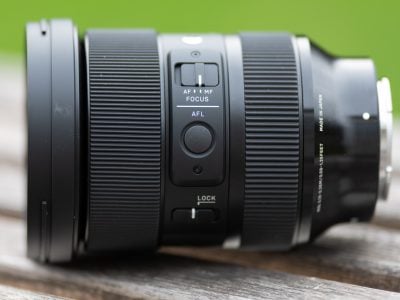Sigma 24-70mm f2.8 DG DN Art review
-
-
Written by Thomas
Quality
Testing: Longitudinal Chromatic Aberration and focus shift
Lenses with focal ratios of f2.8 or larger are often prone to longitudinal color aberrations (loCA, a.k.a. “axial color” or “bokeh CA”). These normally show up as magenta coloration in the foreground and greenish hues in the background and are not easily corrected in post-processing. The new Sigma Art shows no loCA:
Sigma 24-70mm f2.8 DG DN Art Longitudinal Chromatic Aberration (loCA) at 70mm
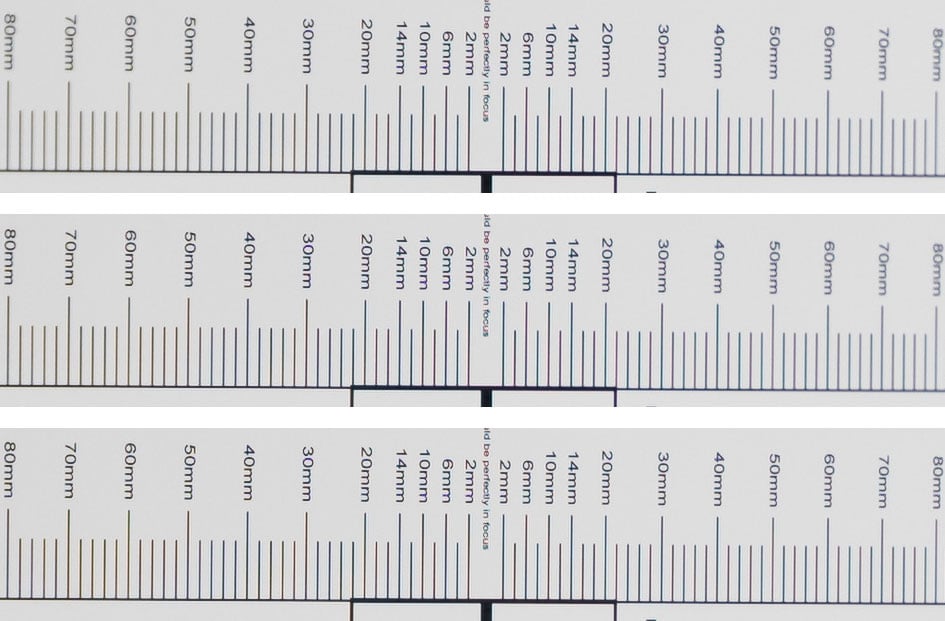
100% crops, from top to bottom: f2.8, f4.0, f5.6; left = foreground, right = background
There’s also no focus shift to worry about although the foreground becomes sharper faster than the background – similar to the Sony. For comparison see the Tamron 28-75mm f2.8 Di III, Sony FE 24-70mm f2.8 GM, and Nikon Z 24-70mm f2.8 S.
The following real life shot shows that the Sigma 24-70mm f2.8 DG DN Art produces no purple fringing around high-contrast edges in the focal plane or green outlining around background subjects:

Above: Sigma 24-70mm f2.8 DG DN Art at 70mm, f2.8; 100% crop; click image for 4k version
For comparison see the Tamron 28-75mm f2.8 Di III.
Sharpness and contrast
Let’s have a look at the theoretical performance of the new Sigma 24-70mm f2.8 DG DN Art first:
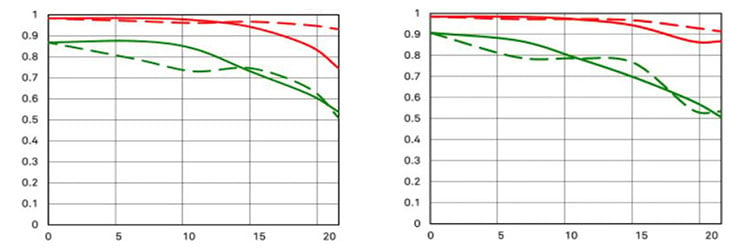
Above: MTF Sigma 24-70mm f2.8 DG DN Art at 24mm, f2.8 (left) and 70mm, f2.8 (right)
For comparison have a look at the MTF charts of the Sony FE 24-70mm f2.8 GM, Tamron 28-75mm f2.8 Di III, Panasonic Lumix 24-70mm f2.8 S Pro, Nikon Z 24-70mm f2.8 S.
These MTF charts show the computed lens-performance of lenses wide open without influence of diffraction. Higher values are better (more contrast) and the closer the line-pairs are together the less astigmatism (= resolution depends on the orientation of the test-pattern) the lens has. The x-axis displays the distance from the optical axis (=center of the sensor) in mm. I’ll show you the real-life performance at 4 mm (center), 13 mm (APS-C-corner), and 20 mm (FF-corner) on a 42MP Sony A7R II body.
From the charts the new Sigma 24-70mm f2.8 DG DN Art should have very high contrast (red lines) across the full frame with some softening of small details (green lines) beyond the APS-C image-circle. Let’s see how this theoretical performance translates into real life results in the sharpness test based on Siemens-stars. Processing was done in Lightroom 8/CRAW 11 from RAW to Adobe Color profile with the built-in lens profile applied for CA compensation. Noise-reduction is set to 0, sharpening to 50/0.5/36/10, with no extra tone, color, or saturation adjustment. White-balance was adjusted to a neutral white and I did some exposure compensation to make the brightness of all crops match. So you will not see light fall-off in the corners.
The following are all 100% crops!
First up is an overview of the wide-open performance at different focal lengths. You can jump to the detailed results at different apertures and comparisons with the competition by clicking on the crops of the respective focal length.
Sigma 24-70mm f2.8 DG DN Art; 100% crop from center, APS-C-corner, FF-corner

Above: 24mm, f2.8

Above: 28mm, f2.8

Above: 35mm, f2.8

Above: 50mm, f2.8

Above: 70mm, f2.8
Sigma’s new zoom lens is very sharp in the APS-C image circle up to 35mm becoming a bit softer toward the long end. The FF-corner starts not bad at 24mm but already shows signs of astigmatism. This becomes progressively worse with 35mm and 50mm looking mushy and a slight recovery at 70mm. The lens also exhibits quite some field curvature toward the FF-corner at normal distances.
If you want to see all the details and comparisons with the Tamron 28-75mm f2.8 Di III, Sony FE 24-70mm f2.8 GM, and Nikon Z 24-70mm f2.8 S, read on. Or you can fast-forward to the performance at long distances.
The following 100% crops for each focal length show the new Sigma 24-70mm f2.8 DG DN Art from f2.8 down to f11 plus a comparison with other lenses at f2.8.
Performance at 24mm:
Sigma 24-70mm f2.8 DG DN Art at 24mm; 100% crop from center, APS-C-corner, FF-corner

Above: Sigma 24-70mm f2.8 DG DN Art at 24mm, f2.8

Above: Sony FE 24-70mm f2.8 GM at 24mm, f2.8

Above: Nikon Z 24-70mm f2.8 S on a Nikon Z7 at 24mm, f2.8

Above: Sigma 24-70mm f2.8 DG DN Art at 24mm, f4.0

Above: Sigma 24-70mm f2.8 DG DN Art at 24mm, f5.6

Above: Sigma 24-70mm f2.8 DG DN Art at 24mm, f8.0

Above: Sigma 24-70mm f2.8 DG DN Art at 24mm, f11
At 24mm focal length the Sigma is a little less sharp than the Nikon but a bit sharper than the Sony in the center.
Performance at 28mm:
Sigma 24-70mm f2.8 DG DN Art at 28mm; 100% crop from center, APS-C-corner, FF-corner

Above: Sigma 24-70mm f2.8 DG DN Art at 28mm, f2.8

Above: Sony FE 24-70mm f2.8 GM at 28mm, f2.8

Above: Tamron 28-75mm f2.8 Di III at 28mm, f2.8

Above: Nikon Z 24-70mm f2.8 S on a Nikon Z7 at 28mm, f2.8

Above: Sigma 24-70mm f2.8 DG DN Art at 28mm, f4.0

Above: Sigma 24-70mm f2.8 DG DN Art at 28mm, f5.6

Above: Sigma 24-70mm f2.8 DG DN Art at 28mm, f8.0

Above: Sigma 24-70mm f2.8 DG DN Art at 28mm, f11
At 28mm focal length all four lenses look very similar in the APS-C image-circle with a slight edge for the Sigma and Tamron in center sharpness. The Nikon has the best FF-corner.
Performance at 35mm:
Sigma 24-70mm f2.8 DG DN Art at 35mm; 100% crop from center, APS-C-corner, FF-corner

Above: Sigma 24-70mm f2.8 DG DN Art at 35mm, f2.8

Above: Sony FE 24-70mm f2.8 GM at 35mm, f2.8

Above: Tamron 28-75mm f2.8 Di III at 35mm, f2.8

Above: Nikon Z 24-70mm f2.8 S on a Nikon Z7 at 35mm, f2.8

Above: Sigma 24-70mm f2.8 DG DN Art at 35mm, f4.0

Above: Sigma 24-70mm f2.8 DG DN Art at 35mm, f5.6

Above: Sigma 24-70mm f2.8 DG DN Art at 35mm, f8.0

Above: Sigma 24-70mm f2.8 DG DN Art at 35mm, f11
Same story at 35mm: Not much differences in the APS-C image-circle, FF-corner much better from the Sony and Nikon.
Performance at 50mm:
Sigma 24-70mm f2.8 DG DN Art at 50mm; 100% crop from center, APS-C-corner, FF-corner

Above: Sigma 24-70mm f2.8 DG DN Art at 50mm, f2.8

Above: Sony FE 24-70mm f2.8 GM at 50mm, f2.8

Above: Tamron 28-75mm f2.8 Di III at 50mm, f2.8

Above: Nikon Z 24-70mm f2.8 S on a Nikon Z7 at 50mm, f2.8

Above: Sigma 24-70mm f2.8 DG DN Art at 50mm, f4.0

Above: Sigma 24-70mm f2.8 DG DN Art at 50mm, f5.6

Above: Sigma 24-70mm f2.8 DG DN Art at 50mm, f8.0

Above: Sigma 24-70mm f2.8 DG DN Art at 50mm, f11
At 50mm focal length the new Sigma is softer across the sensor than the other three lenses. Stopping down to f4.0 helps lift the APS-C image-circle visibly but the FF-corner remains pretty soft until f8.0.
Performance at 70mm:
Sigma 24-70mm f2.8 DG DN Art at 70mm; 100% crop from center, APS-C-corner, FF-corner

Above: Sigma 24-70mm f2.8 DG DN Art at 70mm, f2.8

Above: Sony FE 24-70mm f2.8 GM at 70mm, f2.8

Above: Tamron 28-75mm f2.8 Di III at 75mm, f2.8

Above: Nikon Z 24-70mm f2.8 S on a Nikon Z7 at 70mm, f2.8

Above: Sigma 24-70mm f2.8 DG DN Art at 70mm, f4.0

Above: Sigma 24-70mm f2.8 DG DN Art at 70mm, f5.6

Above: Sigma 24-70mm f2.8 DG DN Art at 70mm, f8.0

Above: Sigma 24-70mm f2.8 DG DN Art at 70mm, f11
At 70mm focal length the Sigma is sharper than the Sony and pretty close to the Tamron but still behind the Nikon.
Performance at long distances
The Siemens-star test-targets are shot at a distance of 45x focal length (i.e. at around 3m for 70mm focal length). But performance of lenses also depends on the shooting distance. Therefore I present another series of test-shots of a city around 1 km away. Processing was done in Lightroom 8/CRAW 11 from RAW to Adobe Color profile. Noise-reduction is set to 0, sharpening to 50/0.5/36/10, with no extra tone, color, or saturation adjustment. I used manual focus at the largest aperture and did not change focus for other apertures. All shots were made at ISO 100 and image stabilization switched off.
Following is an overview of the wide-open performance at different focal lengths. You can jump to the detailed results at different apertures and comparisons with other lenses by clicking on the crops of the respective focal length. As usual I have selected the diagonal that provided the better corner results as almost any lens is a bit decentered. Due to weather conditions I had to shoot 24mm and 28mm focal length at a different day/time with higher humidity which led to less contrasty images than those for 35mm, 50mm, and 70mm focal length. I also lifted brightness of the FF-corner in the crops from 24mm focal length a bit to make it easier to compare.
Sigma 24-70mm f2.8 DG DN Art; 100% crop from center, APS-C-corner, FF-corner

Above: 24mm, f2.8

Above: 28mm, f2.8

Above: 35mm, f2.8

Above: 50mm, f2.8

Above: 70mm, f2.8
In this long-distance test the new zoom lens looks very good across the zoom range. The drop-off in FF-corner resolution does not look too distracting and the softening at 50mm focal length is pretty mild.
If you want to see all the details and comparisons with other lenses, read on. Or fast-forward to the next chapter on vignetting and distortions.
The main image shows the complete scene wide open to give you an impression of the angle of view and to judge vignetting. You can access the respective shots up to f11 via the links beneath the main image. Following the main image are 100% crops for each focal length from the new Sigma 24-70mm f2.8 DG DN Art down to f11. For comparison I use the Tamron 28-75mm f2.8 Di III and Nikon Z 24-70mm f2.8 S (Sony FE 24-70mm f2.8 GM coming soon) both shot on different days.
You can click on each image to access the large original. Please respect our copyright and only use those images for personal use.
Results at 24mm:
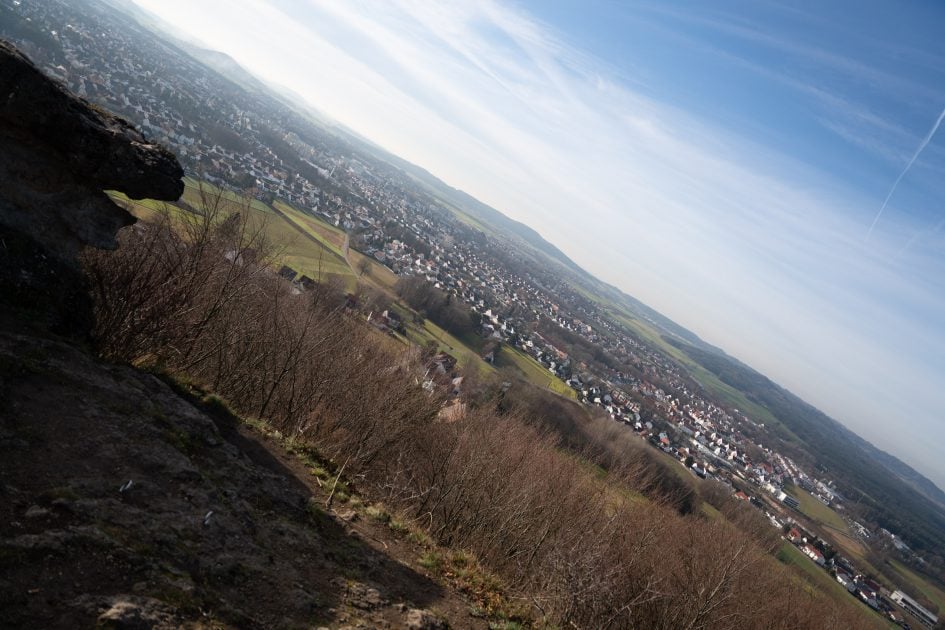
Above: Sigma 24-70mm f2.8 DG DN Art at 24mm, f2.8; click image for 4k version, large original available at f2.8, f4.0, f5.6, f8.0, f11

Above: Sigma 24-70mm f2.8 DG DN Art at 24mm, f2.8; 100% crop from center, APS-C-corner, FF-corner
Above: Sony FE 24-70mm f2.8 GM at 24mm, f2.8; 100% crop from center, APS-C-corner, FF-corner; click here for large original

Above: Nikon Z 24-70mm f2.8 S on a Nikon Z7 at 24mm, f2.8; 100% crop from center, APS-C-corner, FF-corner; large original available at f2.8, f4.0, f5.6, f8.0, f11

Above: Sigma 24-70mm f2.8 DG DN Art at 24mm, f4.0; 100% crop from center, APS-C-corner, FF-corner

Above: Sigma 24-70mm f2.8 DG DN Art at 24mm, f5.6; 100% crop from center, APS-C-corner, FF-corner

Above: Sigma 24-70mm f2.8 DG DN Art at 24mm, f8.0; 100% crop from center, APS-C-corner, FF-corner
At 24mm focal length the new Sigma looks sharper in the FF-corner than the Nikon.
Results at 28mm:
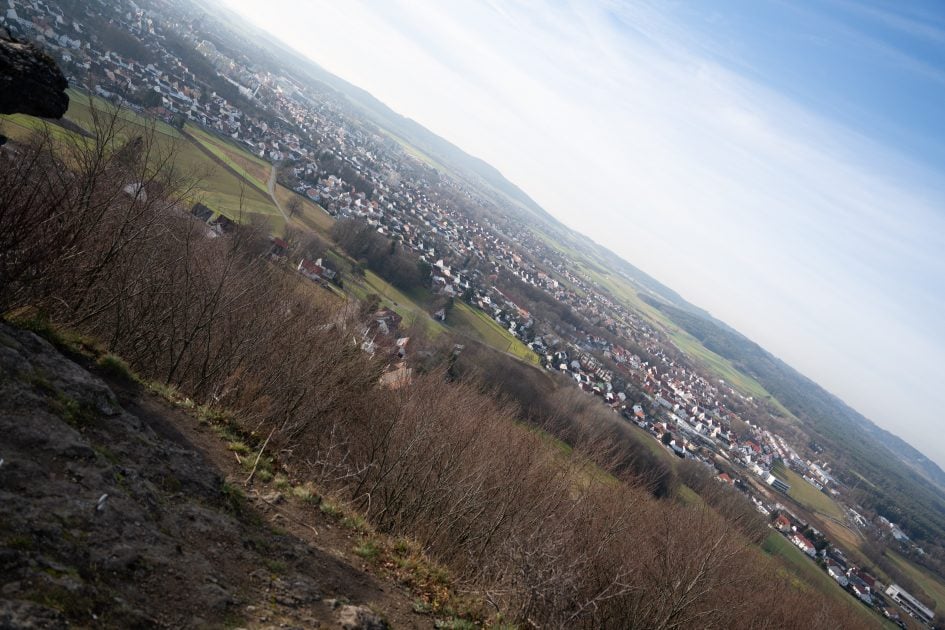
Above: Sigma 24-70mm f2.8 DG DN Art at 28mm, f2.8; click image for 4k version, large original available at f2.8, f4.0, f5.6, f8.0, f11

Above: Sigma 24-70mm f2.8 DG DN Art at 28mm, f2.8; 100% crop from center, APS-C-corner, FF-corner
Above: Sony FE 24-70mm f2.8 GM at 28mm, f2.8; 100% crop from center, APS-C-corner, FF-corner; click here for large original

Above: Tamron 28-75mm f2.8 Di III at 28mm, f2.8; 100% crop from center, APS-C-corner, FF-corner; large original available at f2.8, f4.0, f5.6, f8.0, f11

Above: Nikon Z 24-70mm f2.8 S on a Nikon Z7 at 28mm, f2.8; 100% crop from center, APS-C-corner, FF-corner; large original available at f2.8, f4.0, f5.6, f8.0, f11

Above: Sigma 24-70mm f2.8 DG DN Art at 28mm, f4.0; 100% crop from center, APS-C-corner, FF-corner

Above: Sigma 24-70mm f2.8 DG DN Art at 28mm, f5.6; 100% crop from center, APS-C-corner, FF-corner

Above: Sigma 24-70mm f2.8 DG DN Art at 28mm, f8.0; 100% crop from center, APS-C-corner, FF-corner
The four lenses look pretty similar in the center but at the APS-C-corner and the FF-corner the Sigma seems to have a slight advantage.
Results at 35mm:
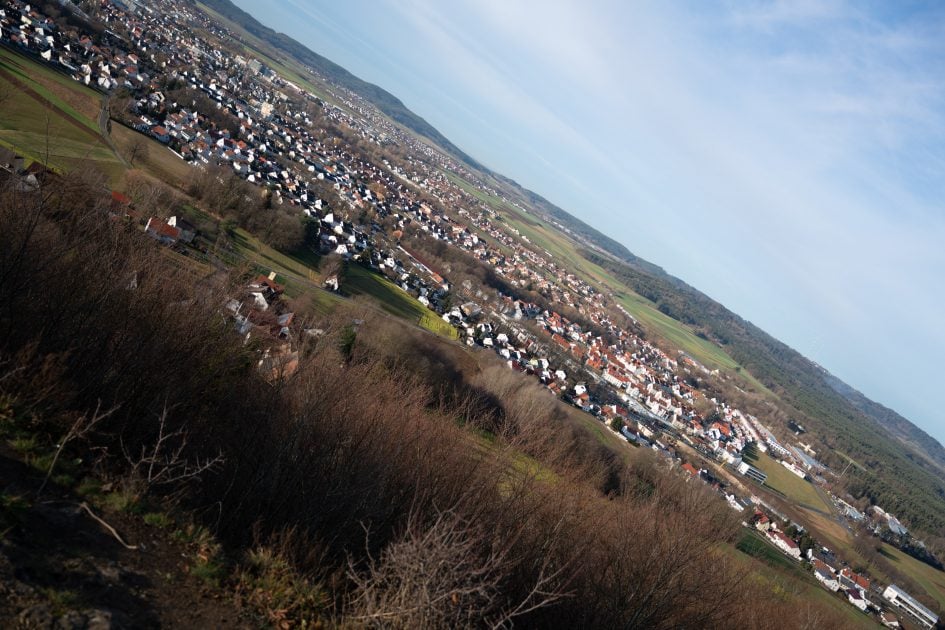
Above: Sigma 24-70mm f2.8 DG DN Art at 35mm, f2.8; click image for 4k version, large original available at f2.8, f4.0, f5.6, f8.0

Above: Sigma 24-70mm f2.8 DG DN Art at 35mm, f2.8; 100% crop from center, APS-C-corner, FF-corner
Above: Sony FE 24-70mm f2.8 GM at 35mm, f2.8; 100% crop from center, APS-C-corner, FF-corner; click here for large original

Above: Tamron 28-75mm f2.8 Di III at 35mm, f2.8; 100% crop from center, APS-C-corner, FF-corner; large original available at f2.8, f4.0, f5.6, f8.0, f11

Above: Nikon Z 24-70mm f2.8 S on a Nikon Z7 at 35mm, f2.8; 100% crop from center, APS-C-corner, FF-corner; large original available at f2.8, f4.0, f5.6, f8.0, f11

Above: Sigma 24-70mm f2.8 DG DN Art at 35mm, f4.0; 100% crop from center, APS-C-corner, FF-corner

Above: Sigma 24-70mm f2.8 DG DN Art at 35mm, f5.6; 100% crop from center, APS-C-corner, FF-corner

Above: Sigma 24-70mm f2.8 DG DN Art at 35mm, f8.0; 100% crop from center, APS-C-corner, FF-corner
Same story at 35mm: While the four lenses are almost indistinguishable at f2.8 in the center, the Sigma ekes out a slight advantage in the APS-C- and FF-corner over the Tamron and Nikon. The Sony has the sharpest FF-corner.
Results at 50mm:
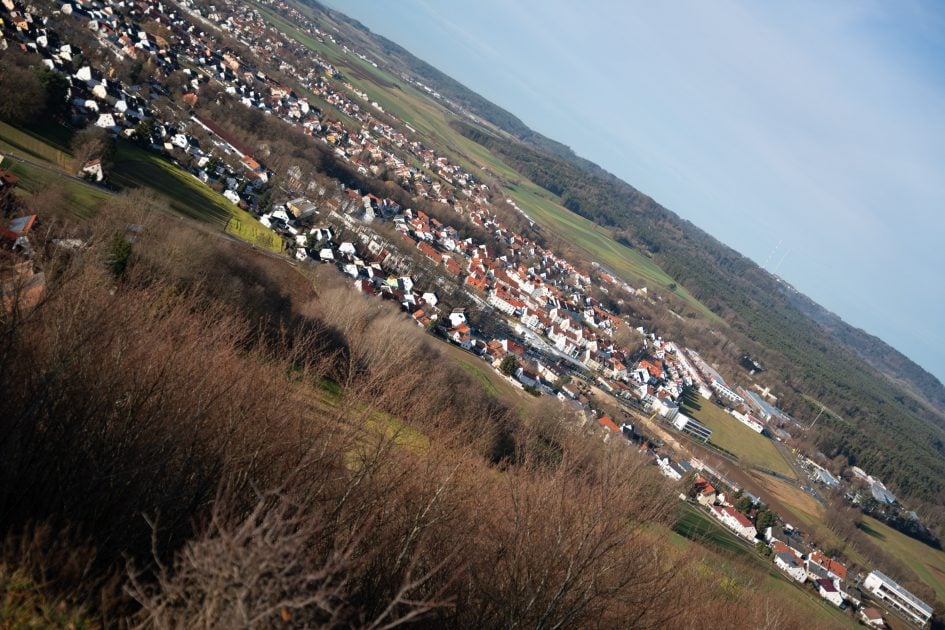
Above: Sigma 24-70mm f2.8 DG DN Art at 50mm, f2.8; click image for 4k version, large original available at f2.8, f4.0, f5.6, f8.0

Above: Sigma 24-70mm f2.8 DG DN Art at 50mm, f2.8; 100% crop from center, APS-C-corner, FF-corner
Above: Sony FE 24-70mm f2.8 GM at 50mm, f2.8; 100% crop from center, APS-C-corner, FF-corner; click here for large original

Above: Tamron 28-75mm f2.8 Di III at 50mm, f2.8; 100% crop from center, APS-C-corner, FF-corner; large original available at f2.8, f4.0, f5.6, f8.0, f11

Above: Nikon Z 24-70mm f2.8 S on a Nikon Z7 at 50mm, f2.8; 100% crop from center, APS-C-corner, FF-corner; large original available at f2.8, f4.0, f5.6, f8.0, f11

Above: Sigma 24-70mm f2.8 DG DN Art at 50mm, f4.0; 100% crop from center, APS-C-corner, FF-corner

Above: Sigma 24-70mm f2.8 DG DN Art at 50mm, f5.6; 100% crop from center, APS-C-corner, FF-corner

Above: Sigma 24-70mm f2.8 DG DN Art at 50mm, f8.0; 100% crop from center, APS-C-corner, FF-corner
At 50mm f2.8 the Sigma has a slightly fuzzy FF-corner and the Sony the softest APS-C-corner of the four lenses.
Results at 70mm:
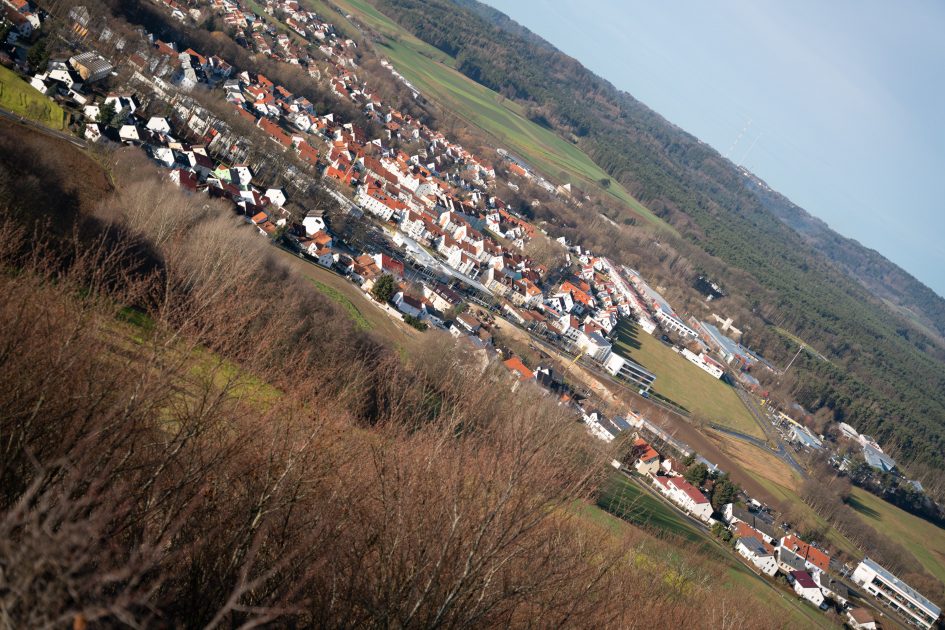
Above: Sigma 24-70mm f2.8 DG DN Art at 70mm, f2.8; click image for 4k version, large original available at f2.8, f4.0, f5.6, f8.0

Above: Sigma 24-70mm f2.8 DG DN Art at 70mm, f2.8; 100% crop from center, APS-C-corner, FF-corner
Above: Sony FE 24-70mm f2.8 GM at 70mm, f2.8; 100% crop from center, APS-C-corner, FF-corner; click here for large original

Above: Tamron 28-75mm f2.8 Di III at 75mm, f2.8; 100% crop from center, APS-C-corner, FF-corner; large original available at f2.8, f4.0, f5.6, f8.0, f11

Above: Nikon Z 24-70mm f2.8 S on a Nikon Z7 at 70mm, f2.8; 100% crop from center, APS-C-corner, FF-corner; large original available at f2.8, f4.0, f5.6, f8.0, f11

Above: Sigma 24-70mm f2.8 DG DN Art at 70mm, f4.0; 100% crop from center, APS-C-corner, FF-corner

Above: Sigma 24-70mm f2.8 DG DN Art at 70mm, f5.6; 100% crop from center, APS-C-corner, FF-corner

Above: Sigma 24-70mm f2.8 DG DN Art at 70mm, f8.0; 100% crop from center, APS-C-corner, FF-corner
At 70mm the Sony is the softest of the four lenses. The Sigma, Tamron and Nikon deliver neck-and-neck performance with the Sigma having a slight advantage at the APS-C-corner but a less clear FF-corner.
Vignetting and distortions
To make it easier to see light fall-off in the corners of a full-frame sensor I’ve arranged a series of three shots each with the new Sigma at f2.8, f4.0, and f5.6. All images were developed to the same brightness in the center and are shown with shading compensation OFF (1st row) resp. AUTO (2nd row):
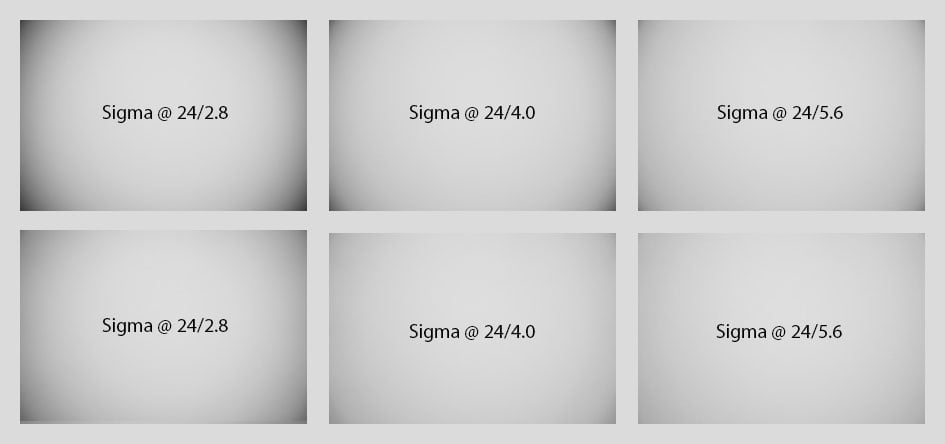
Above: Sigma 24-70mm f2.8 DG DN Art at 24mm focal length
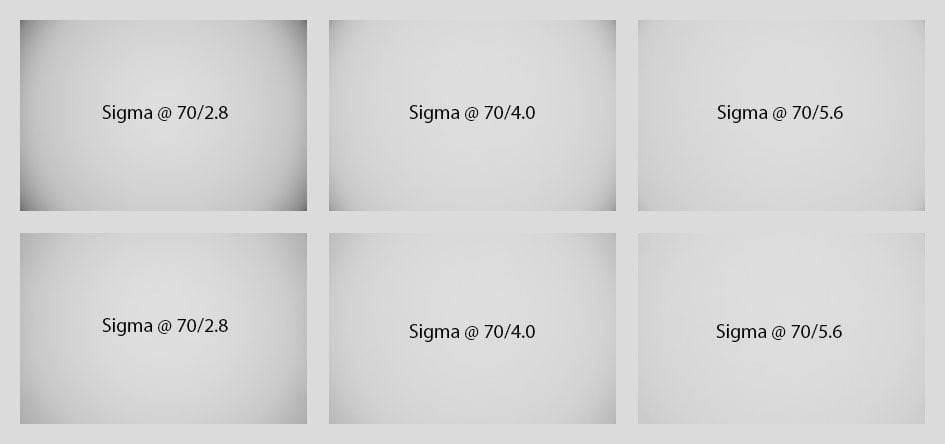
Above: Sigma 24-70mm f2.8 DG DN Art at 70mm focal length
The sample images above show that even with the lens profile applied vignetting is not completely eliminated. With automatic shading compensation the extreme corners are lifted about 1.1-1.2 EV.
Distortions are of the barrel type at 24mm focal length with a strong mustachio effect and turn to pin-cushion at 70mm. See the examples at the end of the samples page. The current version of Adobe’s RAW converter does not correct for distortions.
Rendering of point-light sources at night-shots
Night-shots pose a different challenge for lenses as the contrast is even higher than under bright sun and point-light sources can reveal some weaknesses such as coma, haloing and colour-aberrations that do not show up as prominently in other test-shots. The 100% crops below the main image show the effect of coma in the FF-corner of the new Sigma 24-70mm f2.8 DG DN Art, the Tamron 28-75mm f2.8 Di III and Nikon Z 24-70mm f2.8 S (Sony FE 24-70mm f2.8 GM coming soon) at various apertures:
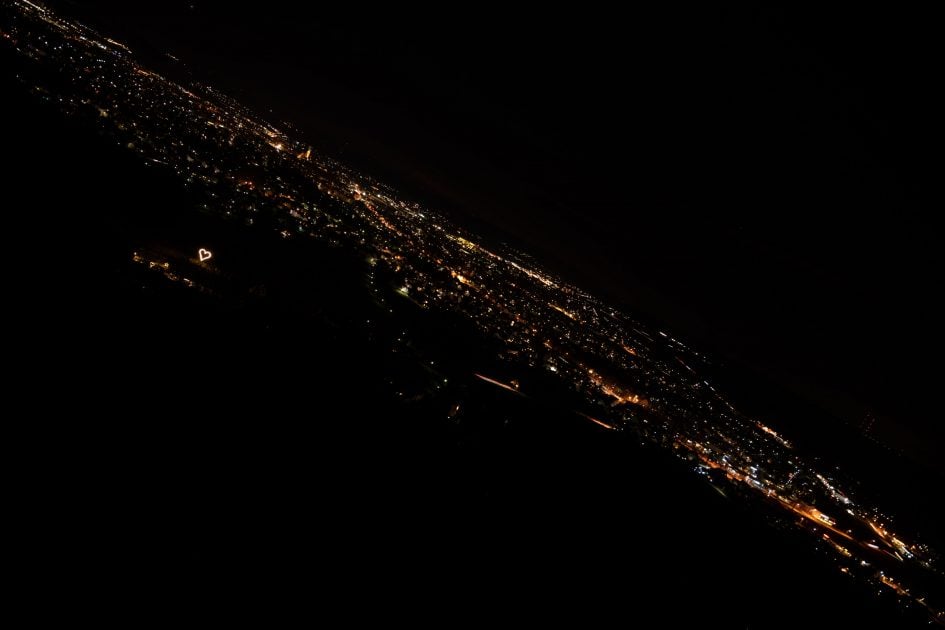
Above: Sigma 24-70mm f2.8 DG DN Art at 24mm, f2.8; click image for 4k version, large original available at f2.8, f4.0, f5.6, f8.0

Above: Sigma 24-70mm f2.8 DG DN Art at 24mm; 100% crops from the FF-corner at f2.8 (left), f4.0 (middle), f5.6 (right)

Above: Sony FE 24-70mm f2.8 GM at 24mm, f2.8; 100% crops from the FF-corner at f2.8 (left), f4.0 (middle), f5.6 (right)

Above: Tamron 28-75mm f2.8 Di III at 28mm; 100% crops from the FF-corner at f2.8 (left), f4.0 (middle), f5.6 (right)

Above: Nikon Z 24-70mm f2.8 S on a Nikon Z7 at 24mm, f2.8; 100% crops from the FF-corner at f2.8 (left), f4.0 (middle), f5.6 (right)
On the short end the Sigma has the least coma.
Coma at 70mm:
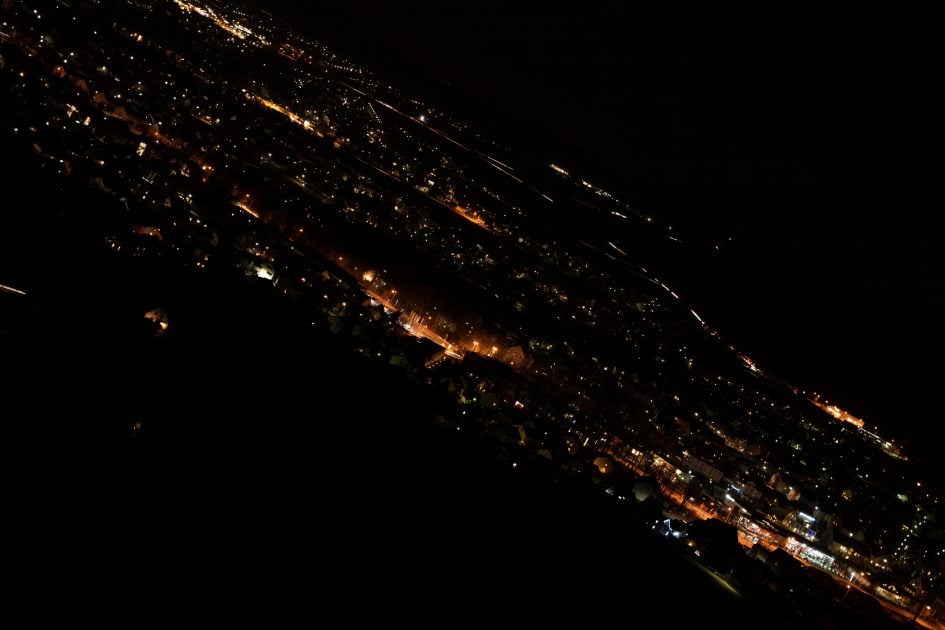
Above: Sigma 24-70mm f2.8 DG DN Art at 70mm, f2.8; click image for 4k version, large original available at f2.8, f4.0, f5.6, f8.0

Above: Sigma 24-70mm f2.8 DG DN Art at 70mm; 100% crops from the FF-corner at f2.8 (left), f4.0 (middle), f5.6 (right)

Above: Sony FE 24-70mm f2.8 GM at 70mm, f2.8; 100% crops from the FF-corner at f2.8 (left), f4.0 (middle), f5.6 (right)

Above: Tamron 28-75mm f2.8 Di III at 75mm; 100% crops from the FF-corner at f2.8 (left), f4.0 (middle), f5.6 (right)

Above: Nikon Z 24-70mm f2.8 S on a Nikon Z7 at 70mm, f2.8; 100% crops from the FF-corner at f2.8 (left), f4.0 (middle), f5.6 (right)
At 70mm focal length the new Sigma 24-70mm f2.8 DG DN Art also shows only little coma.
Rendering of out-of-focus point-light sources
This test is for the rendering of point-light sources in an out-of-focus background. The circle of confusion that is produced by this test is pretty indicative of Bokeh performance (in the background) and light fall-off. Ideally the out-of-focus image of the point-light is evenly lit and perfectly circular, with no “onion-rings”, and without coloration. Large aperture lenses normally produce an effect known as “cat’s eye” the further away from the optical axis the point-light is projected. This is due to optical vignetting in the lens barrel when light enters the lens from an angle.
All images were shot at the longest focal length and largest aperture. The new Sigma is first followed by the Tamron 28-75mm f2.8 Di III and Nikon Z 24-70mm f2.8 S (Sony FE 24-70mm f2.8 GM coming soon).
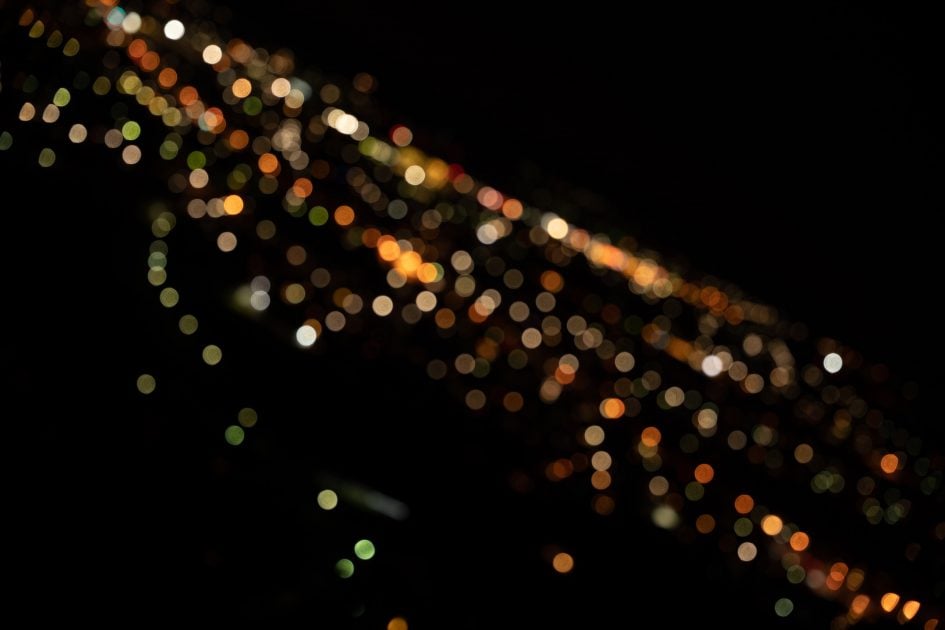
Above: Sigma 24-70mm f2.8 DG DN Art at 70mm, f2.8; click image for 4k version, large original available at f2.8, f4.0, f5.6, f8.0

Above: Sigma 24-70mm f2.8 DG DN Art at 70mm, f2.8; 46% crops from center, APS-C-corner, FF-corner
Above: Sony FE 24-70mm f2.8 GM at 70mm, f2.8; 46% crops from center, APS-C-corner, FF-corner; click here for large original

Above: Tamron 28-75mm f2.8 at 75mm, f2.8; 46% crops from center, APS-C-corner, FF-corner; large original available at f2.8, f4.0, f5.6, f8.0

Above: Nikon Z 24-70mm f2.8 S on a Nikon Z7 at 70mm, f2.8; 44% crops from center, APS-C-corner, FF-corner; large original available at f2.8, f4.0, f5.6, f8.0
All four lenses show mild onion rings and some outlining which is most notable on the Tamron. Looking towards the corners shows that the new Sigma has pretty low compression of the Bokeh balls.
Now let’s see how this analysis of out-of-focus point-light sources translates into Bokeh-performance shooting a book-shelf.

Above: Sigma 24-70mm f2.8 DG DN Art at 70mm, f2.8; click image for 4k version, large original available at f2.8, f4.0, f5.6, f8.0

Above: Sigma 24-70mm f2.8 DG DN Art at 70mm, f2.8; 46% crops from foreground, middle-ground, background
Above: Sony FE 24-70mm f2.8 GM at 70mm, f2.8; 46% crops from foreground, middle-ground, background; click here for large original

Above: Tamron 28-75mm f2.8 Di III at 75mm, f2.8; 46% crops from foreground, middle-ground, background; large original available at f2.8, f4.0, f5.6, f8.0

Above: Nikon Z 24-70mm f2.8 S on a Nikon Z7 at 70mm, f2.8; 44% crops from foreground, middle-ground, background; large original available at f2.8, f4.0, f5.6
The new Sigma 24-70mm f2.8 DG DN Art produces a Bokeh that is less nervous than from the Tamron but not quite as soft as from the Sony or Nikon.
Close-up performance
The new Sigma Art goes down to 1:3.8 magnification at 70mm focal length which is the same as the Tamron 28-75mm f2.8 Di III and a little better than the Sony FE 24-70mm f2.8 GM and Nikon Z 24-70mm f2.8 S at 1:4.2. The following images were shot at 1:4.1 magnification where the area of sharp focus is just 98 x 148mm. The crops shown below are from 0mm, 7mm, and 19mm off the center of the sensor respectively. The test revealed that field-curvature of the lens becomes stronger the closer you focus. So at closer shooting distances the “plane” of sharpest focus is in fact a “bowl” curving away from the lens. For the following crops I focused once on the center at f2.8 and did not change focus:

Above: Sigma 24-70mm f2.8 DG DN Art at 70mm, f2.8; 100% crops

Above: Sigma 24-70mm f2.8 DG DN Art at 70mm, f5.6; 100% crops

Above: Sigma 24-70mm f2.8 DG DN Art at 70mm, f11; 100% crops
The Sigma 24-70mm f2.8 DG DN Art produces mushy results at 70mm, f2.8 even at 7mm image-height. Stopping down to f5.6 or f8.0 produces usable results in the APS-C image-circle. But even stopping down to f11 does not yield sharp borders on a full-frame sensor not to mention the corners. The Tamron 28-75mm f2.8 Di III and especially the Sony FE 24-70mm f2.8 GM and Nikon Z 24-70mm f2.8 S are much sharper in comparison.
To give you an impression of how much field-curvature is at play here I re-shot the lens at 70mm f5.6 two times with optimal focus at 7mm and 19mm image-height:

Above: Sigma 24-70mm f2.8 DG DN Art at 70mm, f5.6; 100% crops from three different optimally focussed images
Flare, ghosting, and sun-stars
Catching a strong light-source shining directly into the lens is always a risky business: it could produce strange colorful ghost-images or reduce contrast considerably through flare and glare. The appearance of flare and ghosting depends on factors like the aperture and the angle of the light hitting the lens. To judge the proclivity of the new Sigma 24-70mm f2.8 DG DN Art for these artifacts I went through a series of well calculated shots against a strong light source to provoke glare and ghosting.
The new Sigma 24-70mm f2.8 DG DN Art has its share of ghost and flare artifacts. At the short end it’s not too bothersome but at the long end it’s more pronounced. Have a look at the following comparison with the Tamron 28-75mm f2.8 Di III:
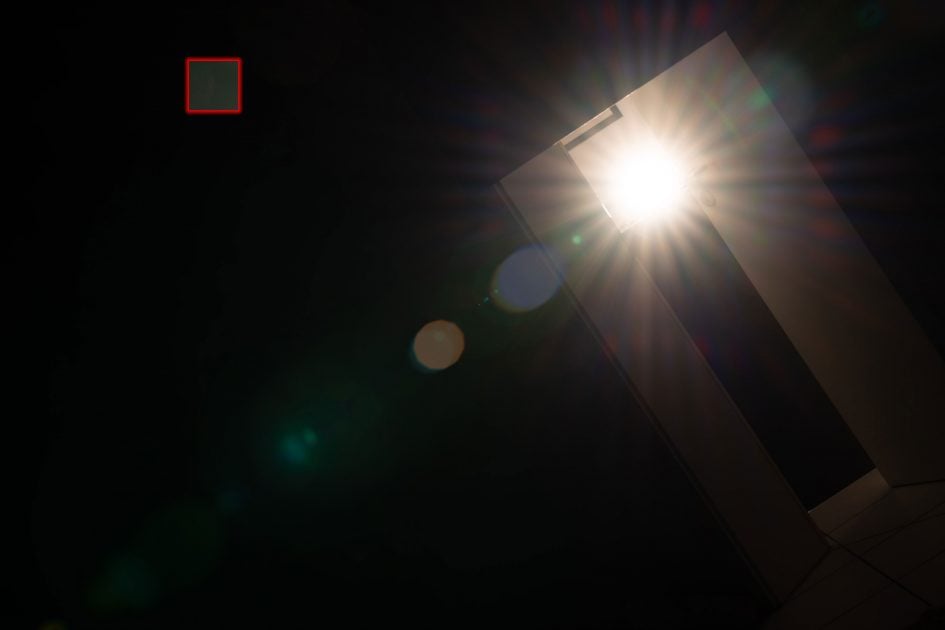
Above: Flare and ghosting. Strong light hitting the Sigma 24-70mm f2.8 DG DN Art at 70mm, f11; click image for 4k version or here for +3 EV exposure compensation
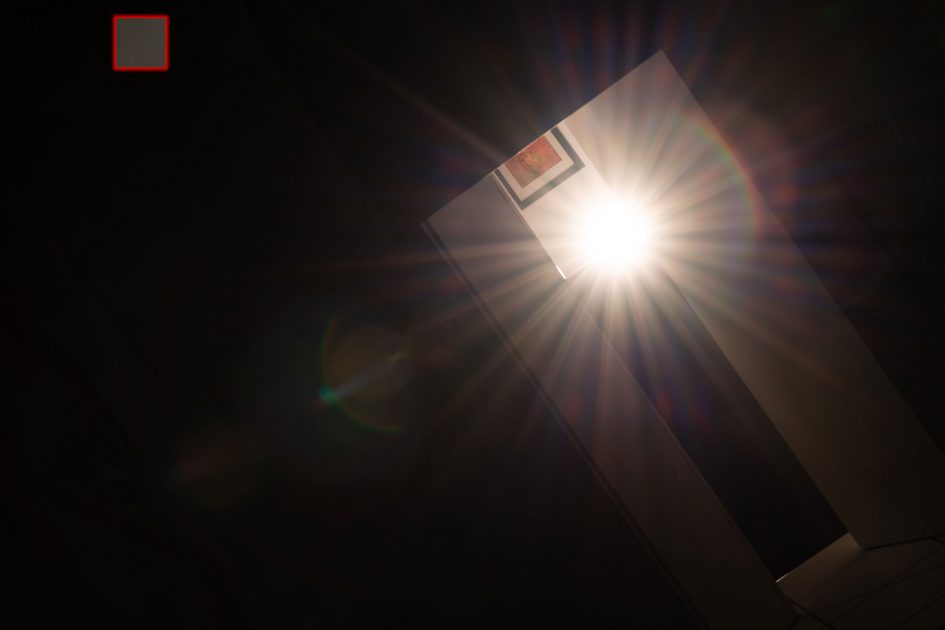
Above: Flare and ghosting. Strong light hitting the Tamron 28-75mm f2.8 Di III at 75mm, f11; click image for 4k version or here for +3 EV exposure compensation
The little bright square inset in the upper left of both images shows the respective area with an exposure compensation of +3 EV to make it easier to see which levels of black the lens renders at that point. The Sigma 24-70mm f2.8 DG DN Art produces more ghosts but less veiling glare than the Tamron 28-75mm f2.8 Di III. In that it is similar to the Sony FE 24-70mm f2.8 GM. The very good Nikon Z 24-70mm f2.8 S combines low levels of glare with only little ghosting (see here).
When the light-source is just outside the corner there is an obvious streak/flare at 70mm focal length. At 24mm it’s much shorter. Fortunately this only happens in a very small area around the corners:
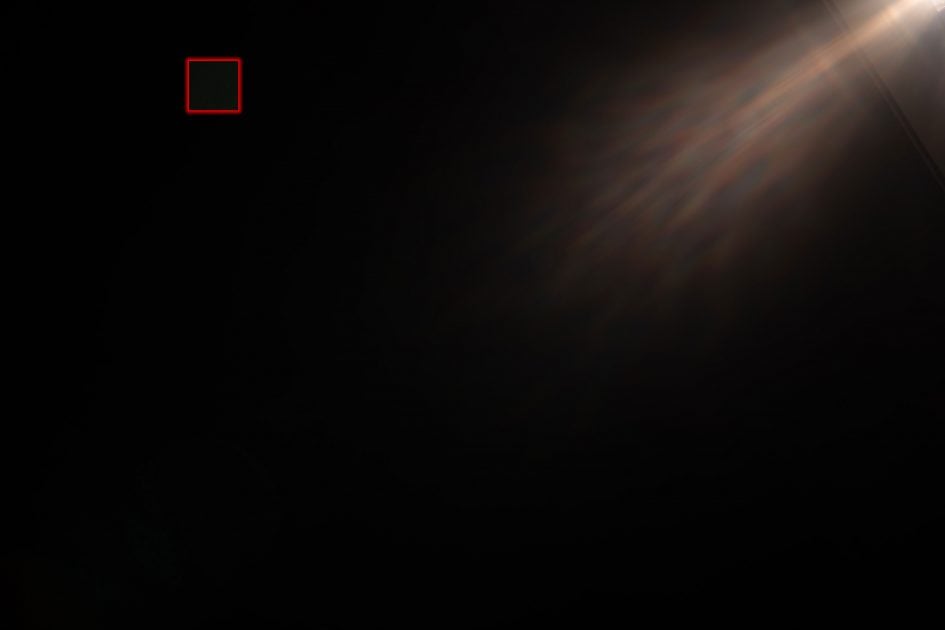
Above: Flare and ghosting. Strong light hitting the Sigma 24-70mm f2.8 DG DN Art at 70mm, f11; click image for 4k version or here for +3 EV exposure compensation
The new Sigma 24-70mm f2.8 DG DN Art produces sunstars that are not very well defined even at f8:

Above: Sigma 24-70mm f2.8 DG DN Art at 24mm, f8 (left) and 70mm, f8 (right), 100% crops
This is similar to the Nikon Z 24-70mm f2.8 S. The Sony FE 24-70mm f2.8 GM and Tamron 28-75mm f2.8 Di III produce much clearer/stronger sunstars.
Next check out my sample images!
Check prices on the Sigma 24-70mm f2.8 DG DN Art at Amazon, B&H, Adorama, Wex or Calumet.de. Alternatively get yourself a copy of my In Camera book or treat me to a coffee! Thanks!










